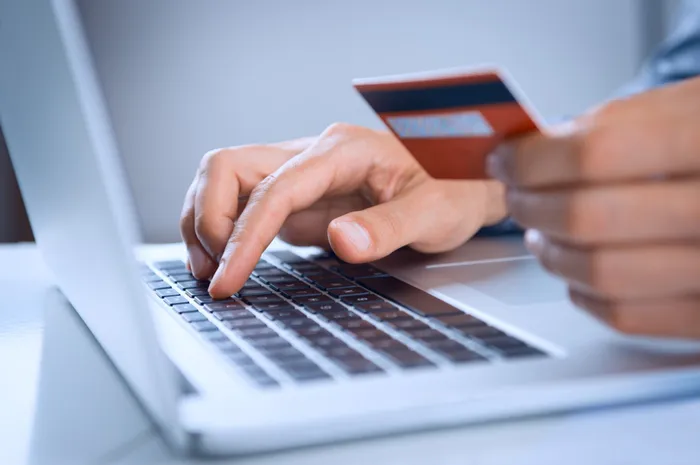Words on wealth: Buy now, pay later, how it works

BNPL, as it has become known, is essentially a no-interest, short-term, staggered payment plan similar to the traditional methods mentioned above.
Image: Shutterstock
The explosion of credit cards and in-store credit facilities resulted in a decline in non-credit payment methods for big-ticket items. There was the popular lay-by system, where the store kept an item for you until you had paid it off over a few weeks or months. I also remember many stores offering an interest-free six-month payment period on bigger purchases. Perhaps some still do, but the burgeoning credit industry largely edged out traditional staggered-payment methods that benefited consumers.
At least, this was the case until about five years ago, when “buy now, pay later” emerged on the consumer scene.
What is BNPL?
BNPL, as it has become known, is essentially a no-interest, short-term, staggered payment plan similar to the traditional methods mentioned above. But it works more seamlessly because of smartphone technology, and you get your purchase straight away, unlike the lay-by method. There are no costs involved if you pay the instalments according to the plan, so it’s basically paying cash, but stretched over a few months. This is great for big-ticket items you perhaps couldn’t afford to settle in one go. And it’s especially useful in an emergency – for example, if your fridge packs up and you need a new one, pronto.
However, it can be abused, as credit cards frequently are, to buy everyday consumables, which invariably leads to trouble. Another shadow over BNPL is that it falls in a grey area when it comes to regulation, although this is likely to be rectified with new financial legislation coming through parliament in the next year or two.
Swedish fintech company Klarna and US company Afterpay were at the forefront of the digital BNPL movement about a decade ago, but it is only in the last five years that BNPL has really taken off globally. No longer the reserve of specialist fintech companies, BNPL has been taken up by banks and established providers.
Pioneering company
I spoke to Mark McChlery, co-founder and chief community, data, and analytics officer at PayJustNow, one of the first BNPL providers in South Africa, which launched in late 2019, a few months before the Covid-19 pandemic.
McChlery said that, prior to launch, studies of Millennial and Gen Z consumers showed they had an aversion to interest-bearing credit and were the lowest users of credit cards globally. Further, only 10% of adult South Africans had credit cards, and for those who did, the interest and administration charges were relatively high.
The BNPL schemes in South Africa operate slightly differently. PayJustNow works on a three-installment repayment plan, where the instalments are monthly and aligned to your payday.
You download the app and register your details, during which time your credit risk is assessed and you are assigned a rand limit on your account. On buying an item in-store or online at a retailer that has partnered with PayJustNow – and there are many that have – you scan a QR code at checkout, and the instalments come off your bank account via your bank card. One third of the amount comes off immediately, with two monthly instalments thereafter.
As a precaution, McChlery says new members are not allowed to make a second purchase before the first purchase is paid off. Thereafter, you can make multiple purchases up to your rand limit.
The only costs are if you incur a penalty charge on late payment, and with PayJustNow, this happens only on a second failed attempt. McChlery says if a debit attempt fails, you receive an SMS and email giving you 24 hours before a second attempt is made. If the debit fails again, it is at that point that you incur a late-payment fee.
So, how does PayJustNow make money? “We charge the retailer a fee on every transaction, and this forms the majority of our revenue, but as we grow, we also accumulate rich, first-party consumer data in terms of behaviour, propensity, and demand. This provides retailers with insights into their customers and how they are shopping. On top of that, our retailers are able to use our app for marketing.”
Demographics and consumer insights
McChlery says PayJustNow currently has about 2.1 million facility-approved subscribers, making up about 20% of the addressable adult consumer market, and is signing up over 100,000 members a month. “We have active consumers in every generational band, although people in their late 20s to late 30s form the biggest cohort. Members are overwhelmingly female – about 68%,” he says.
Apparel, phones, laptops, homeware, and beauty treatments are being paid for using this system. I was surprised to hear from McChlery that elective medical procedures, which many people put off having done because of affordability issues, are now accessible via BNPL.
On the thorny topic of using BNPL for groceries, McChlery says the system was not intended for grocery shopping. “We are integrated with stores that offer groceries, but it was never our intent for groceries to be purchased using BNPL. We discourage it, and one of our bigger grocery retailers won’t allow you to check out with PayJustNow if you’re just shopping for groceries. They monitor that and make sure it’s only when you’re buying big-ticket items such as appliances.”
A takeaway for me is that BNPL, like credit, can be abused. But because of the short-term nature of BNPL payment plans and the fact that these schemes derive their revenue not from the consumer but from a one-time fee from the retailer, the risks to both consumer and provider are significantly lower. A lingering question is whether or not BNPL will reduce South Africans’ dependence on debt.
* Hesse is the former editor of Personal Finance.
PERSONAL FINANCE